3.3: Rococo (1715-1789)
- Page ID
- 120742
Introduction
Derived from the French word rocaille, Rococo is based on scrolling lines, curves, and counter curves in changing directions. A sensuous format filled with fantasies, Rococo was started in 1715 as a rebuff of Versailles's overly elaborate and gaudy yet dark Baroque style. Although Rococo is ornate, the form and colors are lighter, focusing on the elements of nature and the details found in the scene, the aristocrats and their fashion instead of the darker Baroque based on symbols of the powerful church. Light in the paintings was scattered with images of a frolicking society in pastures or forests and frequently hidden sexual innuendos.
The trend started in France and quickly spread to England by the court painter for the Prince of Wales. As the aristocrats in France moved from Versailles back to Paris, they created salons or large central spaces for entertainment. The Rococo style was found in the sculptures, specialized furniture, room décor, and paintings and focused on pleasantry and light-heartedness instead of the austere Baroque standards. Pastels and gold were the predominant color palettes, mahogany the primary wood type, and oversized mirrors to reflect light. The ceiling in a salon at a hotel in Paris (3.3.1) demonstrates delicate curves forming shapes sculpted on the walls and ceiling, pastel green color reflecting the light from the chandelier and mirrors mimicking the windows, a place of carved wood gilded in gold.
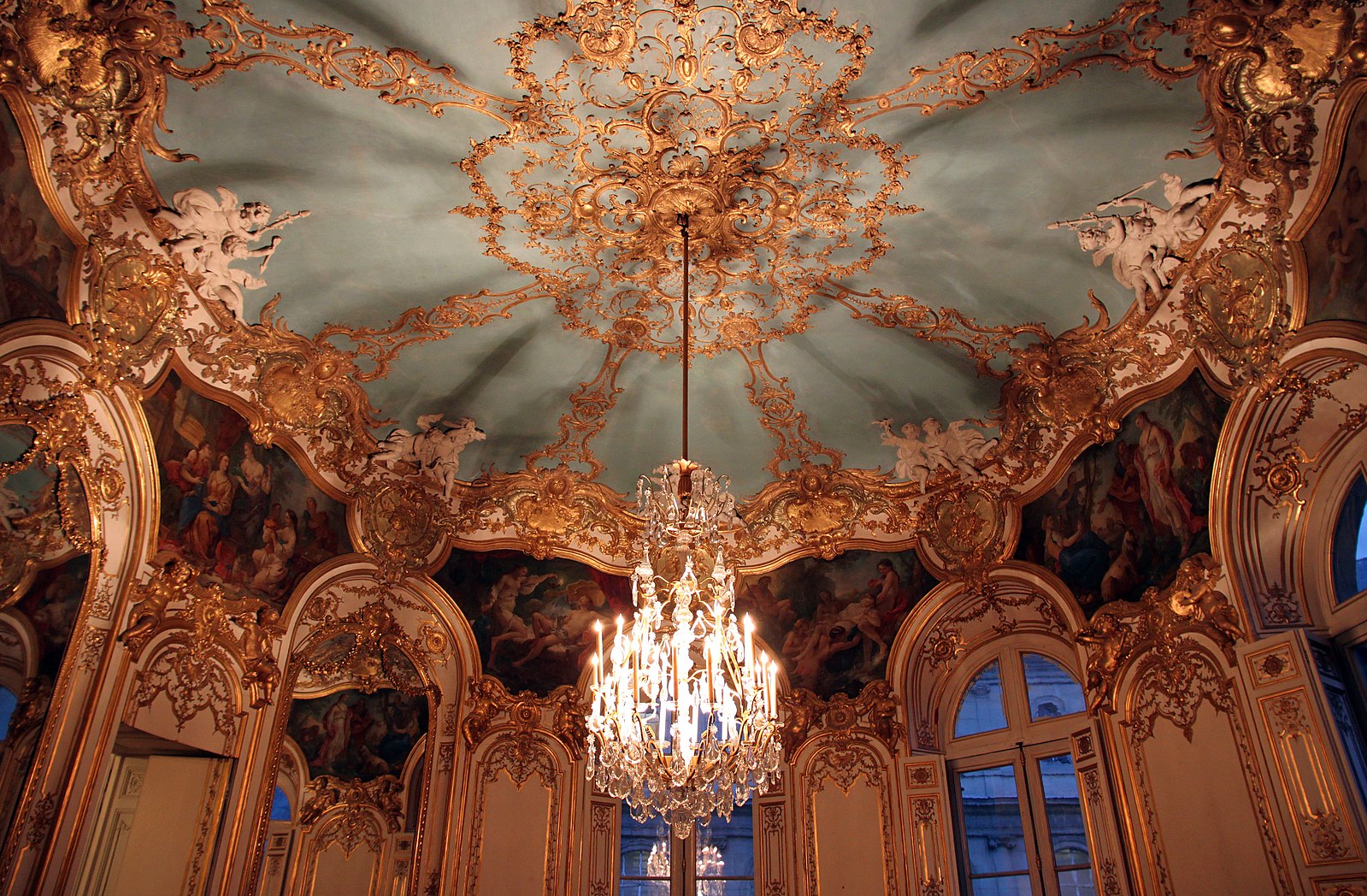
The chest of drawers (3.3.2), made by Charles Cressent, exhibits the Rococo furniture, complex sculptured forms, gilded and applied to the chest. Small cherubs, a standard feature, languish on the tree branches with vines and flowers intertwined.

During this period, the Salon grew from Paris to become the prestigious and official arbiter of acceptable art, holding the most prominent annual shows in the Western art world. To be considered a successful artist by the early 1700s meant acceptance into the Salon. By 1725, the performances were held in the Louvre, and paintings hung in every space. The printed catalogs provide accurate records of the works of the day, and the descriptions of the paintings mark the start of the art critic. Other salons were organized and held exhibits; to be worthy of acceptance into the salon, the artists had their work juried following the standards of acceptable art.
The Rococo painting was playful, full of mythical scenes and extravagant landscapes or interiors, ornate with 'cotton-candy' colors, celebrating love, and life outside of mythology. This period also illustrated the influence and competence of female painters.
Elisabeth Louise Vigée-Le Brun
Elisabeth Louise Vigée-Le Brun (1755–1842) was considered one of the most significant 18th-century painters and achieved success throughout Europe. Her husband was a Parisian art dealer, yet she was denied access to the Academie Royale de Peinture et de Sculpture because of his occupation. With the help of Marie Antoinette, at the young age of 28, she was admitted, one of the fifteen female members. During the French revolution, she had to leave France, working in Italy, Germany, and Russia, painting images of the multiple royal families and their associates.
In the original painting, Marie-Antoinette with the Rose (3.3.3), the queen wears one of her casual muslin dresses, considered inappropriate as she was not dressed in her formal clothing based on her rank. Vigée-Le Brun made another portrait with the queen in the same pose, wearing an elegant silk dress. The blue-grey color of the dress and pale skin color stands out against the darker background of a garden in Versailles where the queen selected a rose from a bush in the foreground. The pose of her neck, delicate lace, shiny satin material, powdered wig, and feathered hat all reflect the wealth of her royal position. The queen loved roses and had over two thousand roses planted in one of the gardens. Vigée-Le Brun developed a close relationship with the queen, painting over twenty-five different portraits of the queen before the revolution.
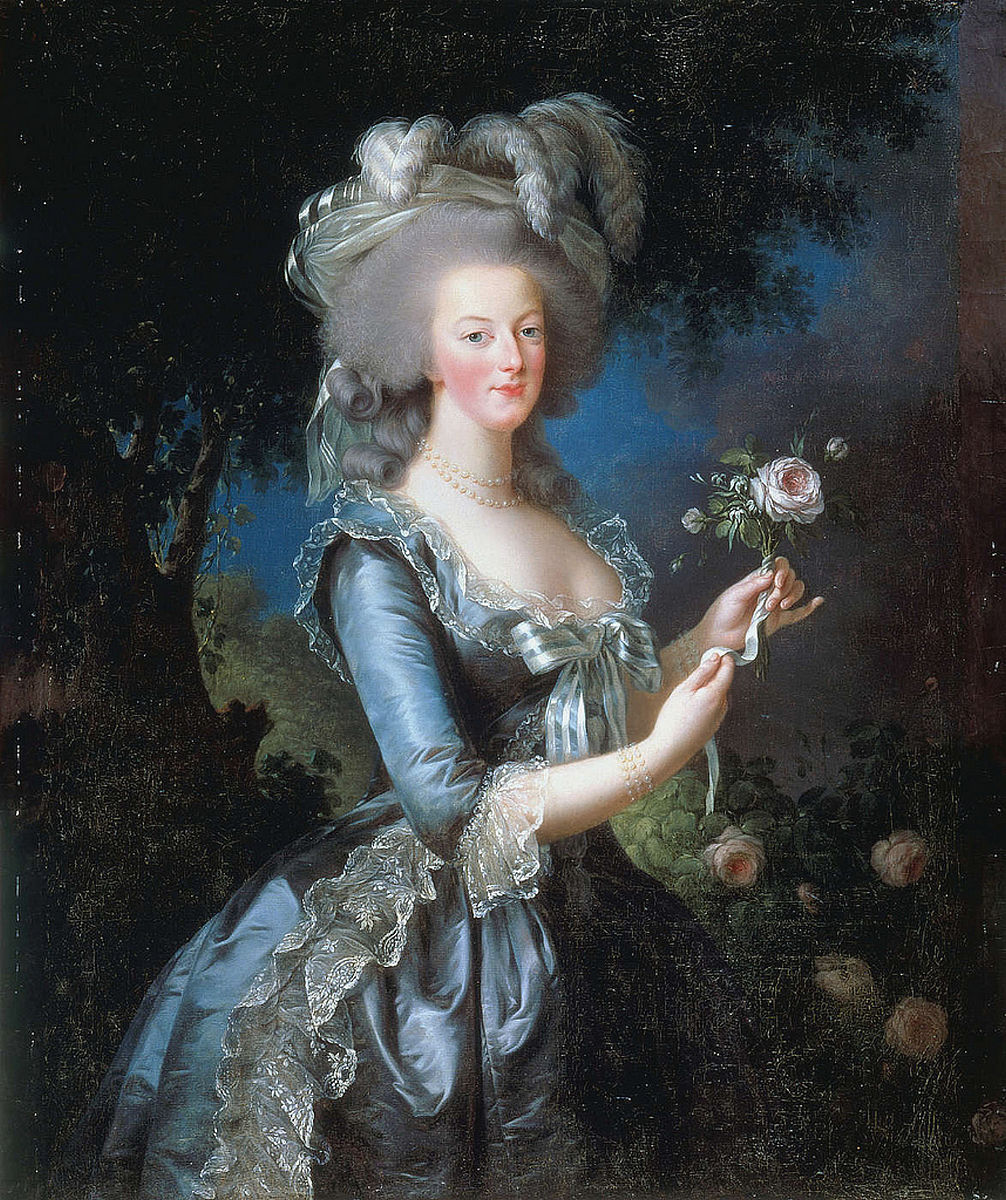
Vigée-Le Brun's painting of herself (3.3.4) has a simpler look, a jaunty appearance with the straw hat, and her unpowdered, loose hairstyle and less ornate image. The light shines on the part of her face and the pale skin of her neck as she faces forward, her eyes looking at the viewer, confident in herself. Her clothing is simpler in style yet still demonstrates elegant silk and lace. At the same time, she holds the palette and brushes casually in her hand, her skill in painting apparent in the precise detail and beauty of the portrait.

Marie-Suzanne Giroust Roslin
Orphaned early in her life, Marie-Suzanne Giroust Roslin (1734-1772) was born in Paris and stayed there throughout her lifetime, residing with relatives and studying art with well-known teachers. After marrying another artist, she had six children, continuing as an artist and one of the fifteen women ever accepted into the Academie Royale de Peinture et de Sculpture before the revolution. For her work, she used pastels and was considered one of the most extraordinary talents, although historians believe she made under thirty works. "While her earlier work is not of uniform achievement, the final pastels have a virtuosity…, limited only by the restricted palette she seems to have chosen."[1
The portrait of the sculptor Jean-Baptiste Pigalle (3.3.5) in pastels on blue paper was Giroust's reception piece for the Academie, highly praised for its spectacular colors. The portrait is smaller than the oil paintings in the Academie, probably because the paper was more fragile than canvas. The components of the work were standard, a person considered a gentleman with a properly combed wig, sitting against a plain background with a small sculpture nearby.
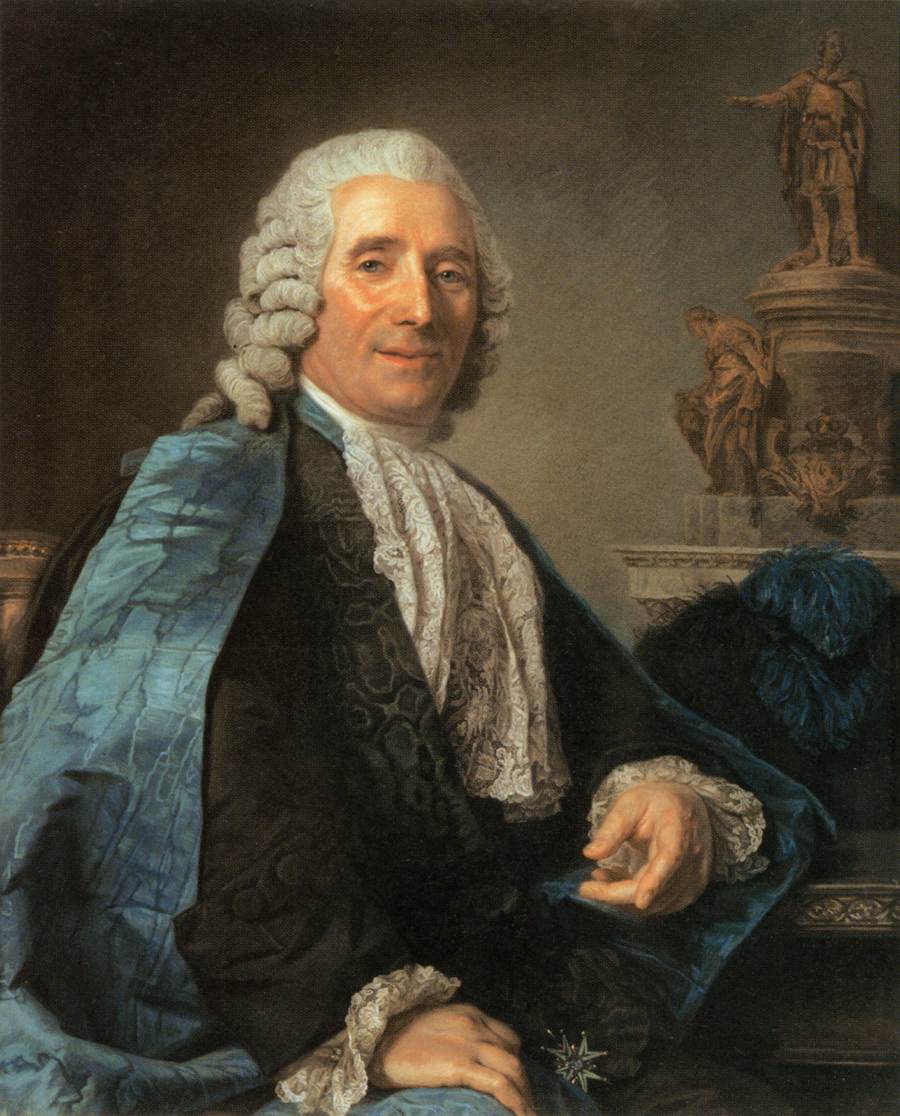
Marie-Joseph Peyre was an architect, and his small portrait (3.3.6) is a testimony to the ability of Giroust. The sheen of his blue coat and the elaborate, decorative lace and trim were hard to produce with pastels. His pale face and powdered hair bring light to the portrait against the dark background.
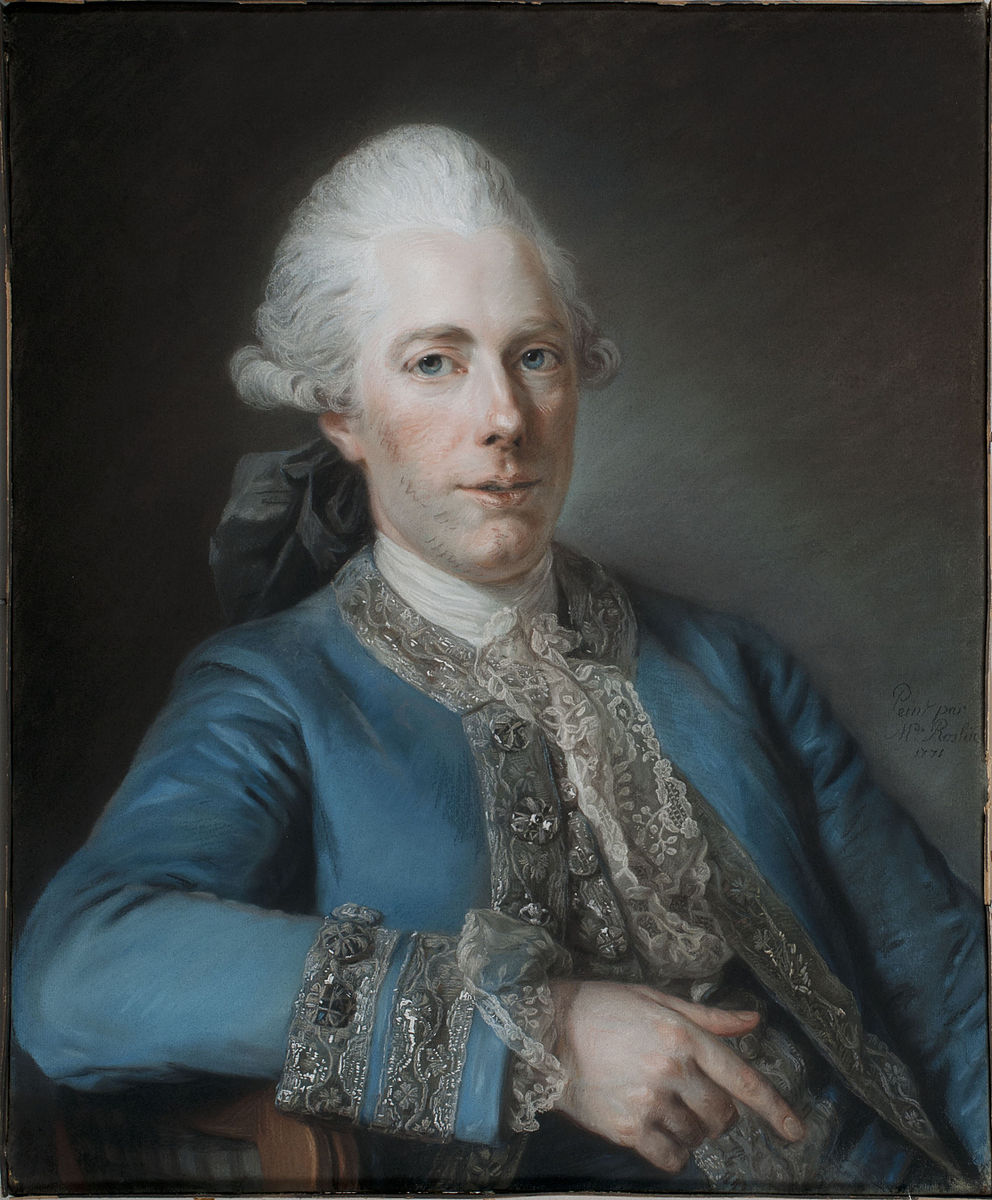
Anne Vallayer-Coster
Anne Vallayer-Coster (1744-1818) worked with oils on canvas, painting still life instead of the more traditional portraits. Women were not allowed to draw nude models, a skill needed for the higher genres, and still life, considered a lower level of art, was appropriate for women artists. Vallayer-Coster perfected her talent in the format using detailed brush strokes. One art historian stated, "bold, decorative lines of her compositions, the richness of her colors and simulated textures, and the feats of illusionism she achieved in depicting a wide variety of objects, both natural and artificial."[2] She was accepted by the Academie and a painter for the queen, earning her an apartment in the Louvre.
Her painting, The Attributes of Music (3.3.7), is a composition laid on a diagonal plane, moving from the violin to the horn; some of the instruments are flat, others round, all of them laying in different positions though spontaneously assembled. Vallayer-Coster uses a broad palette of colors, the light sheet of music to accent the background, and the blue ribbon to continue the movement.
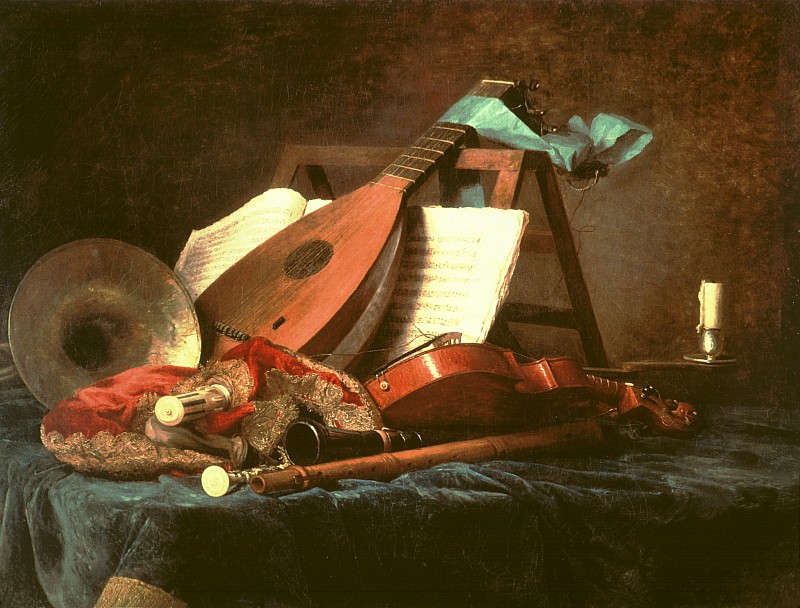
Vase of Flowers with a Bust of Flora (3.3.8) displays her color and precision to unite a group of objects onto one canvas. The Louis XVI desk and the marble top are the base for the arrangement, while the parted drapes bring light and depth to the painting through the white curtains. The bust of Flora sits slightly behind the celadon vase adding width and completeness to the overall image. The white flowers in the vase are precisely arranged as the darker background flowers seem to wilt. Fruit and branches are casually strewn across the desk, bringing the painting a mixture of the formal and rustic.
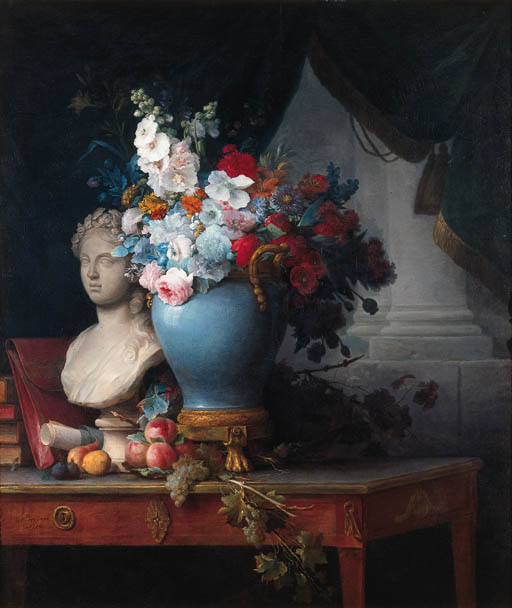
Adélaïde Labille-Guiard
Although Adélaïde Labille-Guiard (1749-1803) married young, she also separated from her husband to begin her studies in art, a complex path for a female artist. She first learned to paint miniatures before moving to large portraits using both pastels and oils, and she was admitted into the Academie Royale de Peinture et de Sculpture at the same time as Vigee-Le Brun. Self Portrait with Two Pupils (3.3.9) is considered Labille-Guiard's most important work. In the life-sized painting, she is sitting in front of her easel, two students standing behind her eagerly learning how to paint. The light blue dress and matching ribbon on her hat portrays her as a successful artist while the students are clothed in simpler garments. The faces of all three women stand out against the dark background, an example of Labille-Guiard's skill with color.
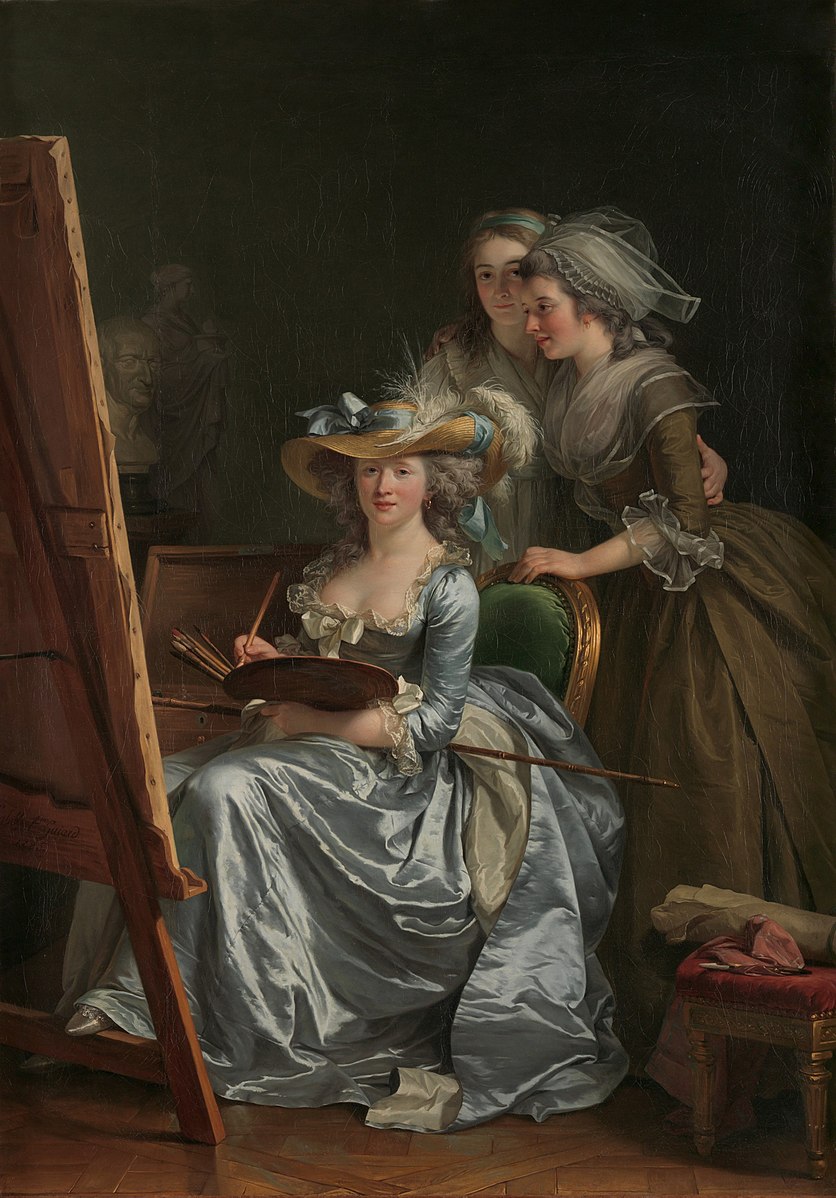
Princess Marie Adélaïde was one of the daughters of Louis XV. The purpose of life for the girls was to marry someone from another country who would help the king expand or maintain his status. The king's oldest daughter married at twelve; however, most of Europe was Protestant. Few Catholic royalty were left as suitable matches for the other girls, so Princess Marie Adélaïde never married and languished at Versailles. When her nephew became king and married Marie-Antoinette, the princess gained an enemy. Labille-Guiard portrayed the older princess, Princess Marie Adélaïde of France (3.3.10), as she painted a medallion of her late parents and brother, brush in one hand and towel in the other. Her elegant red robe highlights the center of the painting, with the green chair in the background as the perfect sparring colors. The detailed silver and gold dress and white lace demonstrate Labille-Guiard's talent in precision painting. The background is lighter than most paintings, and the details of the walls and columns are visible.

Jean-Antoine Watteau
Jean-Antoine Watteau (1684-1721) was a French painter credited for starting the move to a style called Rococo. He shifted from the darker, severe Baroque paintings to lighter colors, playful and more naturalistic. He also moved to the different subject matter, focusing on comedic figures and dancers of the ballet. The genesis for The Clown (3.3.11) is unknown; was it a friend of Watteau, Watteau himself, or simply an imaginary person. The painting was large, and the expressionless clown Pierrot, standing outside, fills most of the canvas as the familiar characters of the Commedia dell'Arte are hidden in the bushes. His use of light color for the clothing and the slightly darker blue of the sky made the painting unusual and set the tone for his pastels of Rococo.
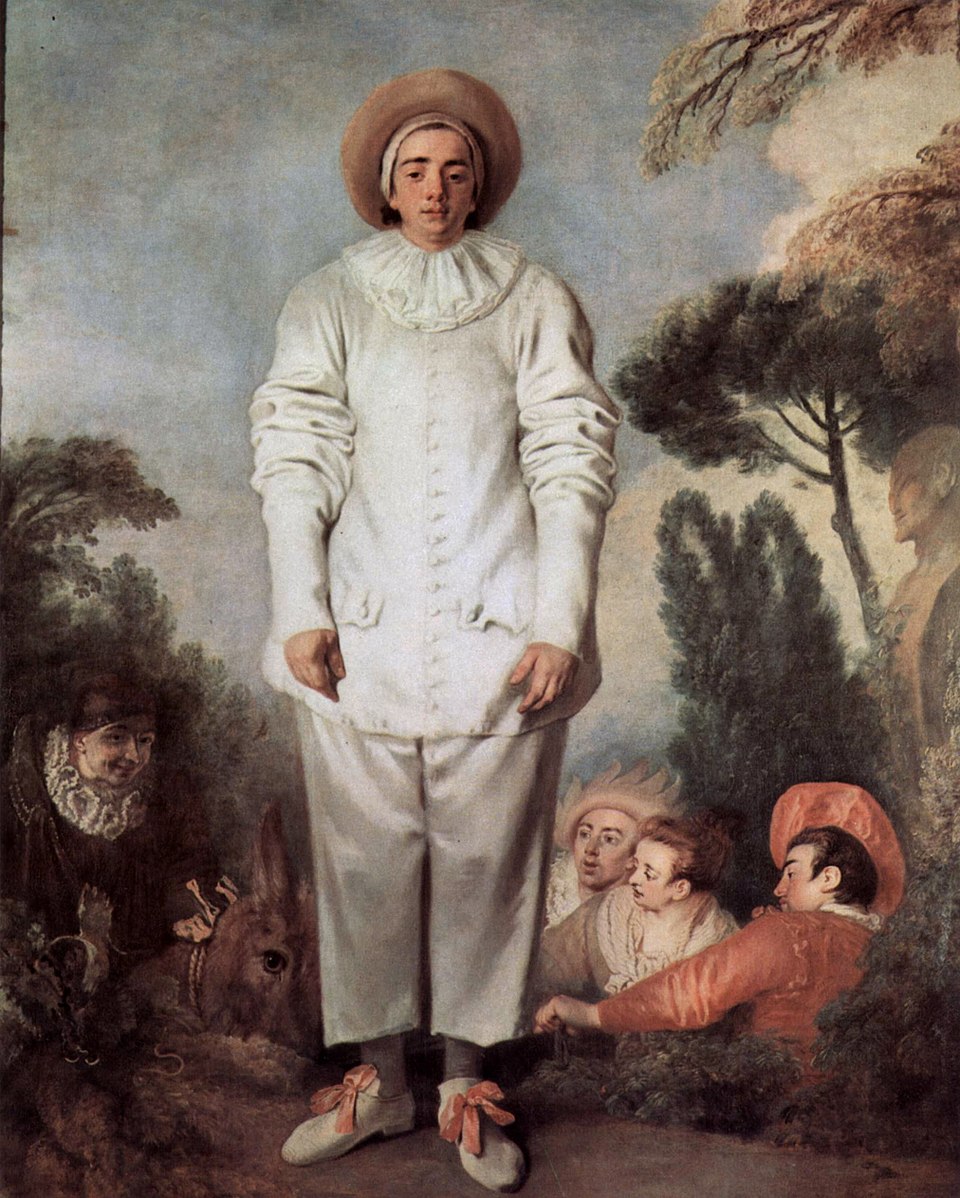
Watteau's major painting, Embarkation for Cythera (3.3.12), took five years to complete and became his 'reception piece' submitted for entrance into the Academie. The concept of the subject matter was new – lovers sailing for Cythera or perhaps returning from the island of freedom and love – and it generated a new category, fete galante, or courtship party where amorous, elegantly dressed figures cavorted in rural or park-like settings. Cythera was a Greek island, home to Aphrodite, the Greek goddess of love, so the couples were going to the island or returning (historians still do not know which direction). Watteau painted each of the couples in different positions with cherubs everywhere symbolizing love. He used vibrant pastel colors to create the background and the ship, departing from the dark Baroque backgrounds.
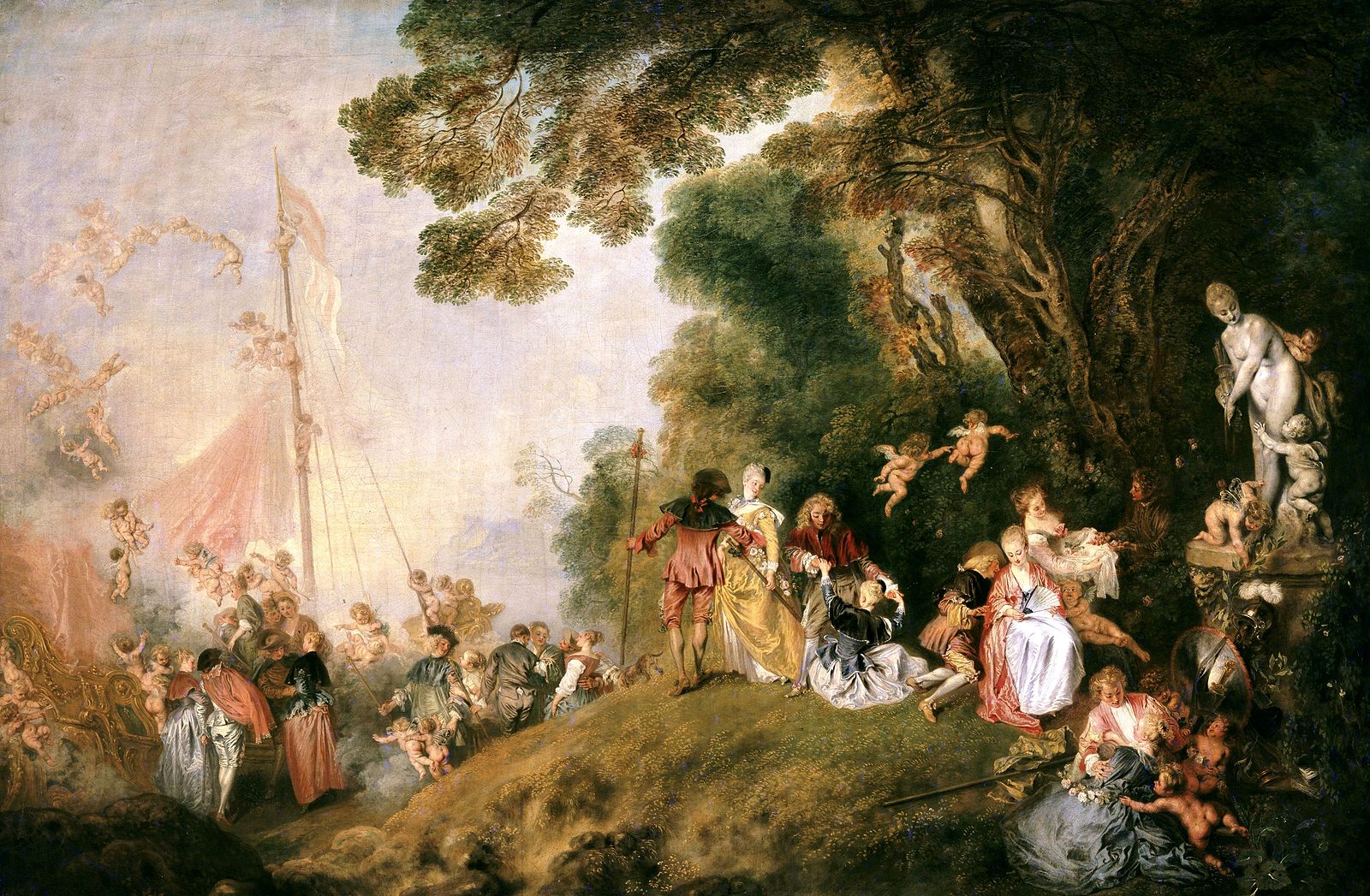
Francois Boucher
Francois Boucher (1703-1770) studied multiple types of art, traveling through different countries to understand those who mastered Baroque, how the Dutch painted landscapes, and the beauty of the Italian countryside. He returned to France and built his reputation, becoming the king's painter. Boucher was accepted into the Academie, fortunate to have Madame de Pompadour as his patroness whom he painted multiple times. He reinvented a specific form of a pastoral landscape with shepherds and girls in silk dresses erotically cavorting around the countryside.
The Toilette of Venus (3.3.13), Madame de Pompadour is painted in the dressing room; her soft body forms the focal point emphasized by the supple cherubs. The room is decorated with silks and velvet, with blue drapes framing the landscape in the background. A few reviewers of the time thought the colors were dull, and Madame de Pompadour was lifeless.
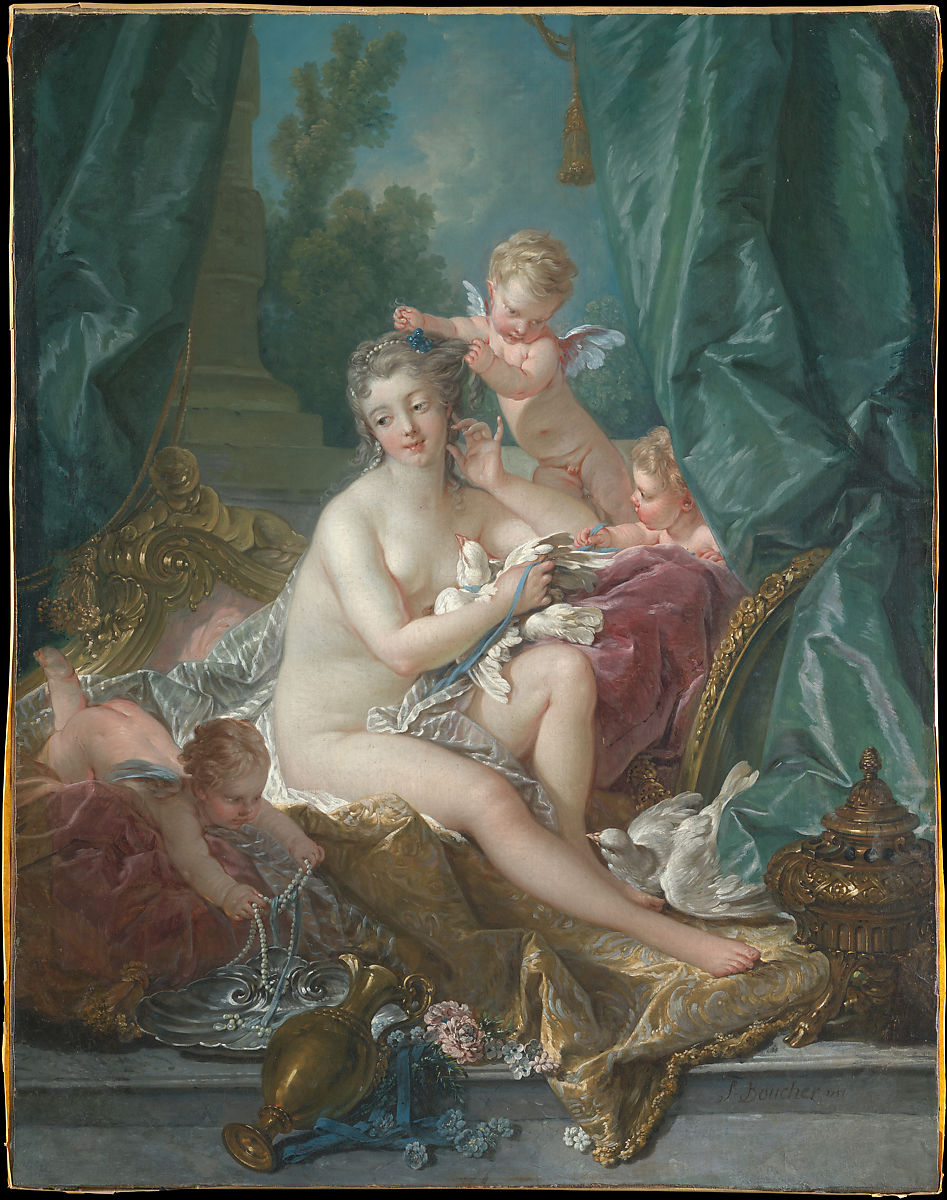
An Autumn Pastoral (3.3.14) depicts the shepherdess ignoring her sheep to lie with her paramour, lighter in color than the background, moving them central to the composition. He exhibits excellent details in the cracks of the pedestal or leaves on the trees. A small girl adds suspense as she is hidden in the sheep, unnoticed by the couple. However, Diderot reviewing the painting at the Salon in 1765, stated:
"What a misuse of talent! How much time has gone to waste! You could have had twice the effect for half the effort. With so many details all equally carefully painted, the eye doesn't know where to look. No air. No rest. And yet, the shepherdess does have the right face for her station. And this bit of countryside surrounding the vase does have the delicacy, a freshness, a surprising charm. But what does this vase and its pedestal mean? What's the meaning of those heavy branches on top of it? When one writes, does one have to write everything? For pity's sake, leave something to the imagination. But if you say that to a man who has been corrupted by praise and who is convinced of his own talent, he'll just nod his head in disdain; you'll say your piece and we'll move on. Jussum se suaque solum amare [Condemned to love nothing but himself and his own works]. It's a shame nonetheless."[3]
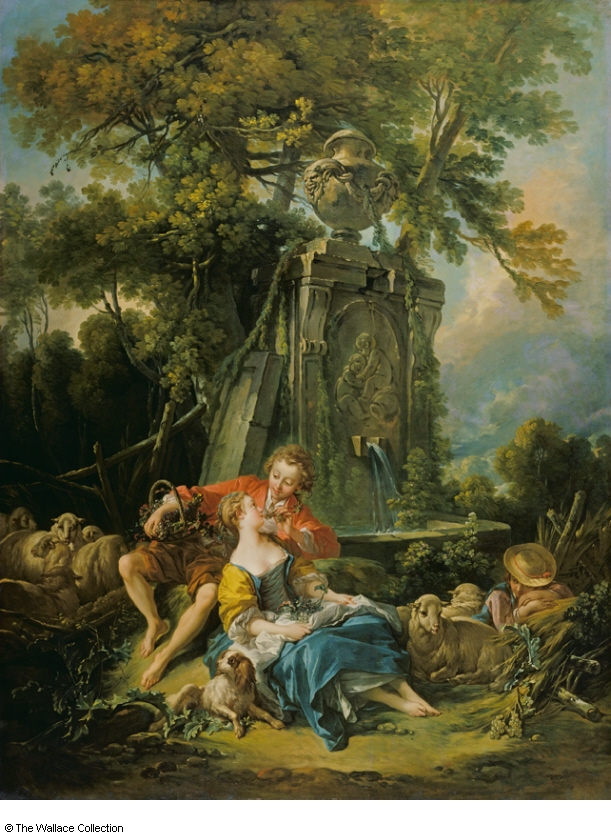
Jean-Honore Fragonard
Jean-Honore Fragonard (1732-1806) worked as a printmaker and a painter producing over five hundred original works plus numerous etchings and drawings, making him a very prolific artist of the period. Fragonard's subject matter of eroticism and playfulness were well suited to the Rococo ideals. He studied in Italy and France and preferred to build a large number of private clients instead of working to the standards and demands of the salons. Fragonard's painting, The Swing (3.3.15), is studied as a masterpiece representing the Rococo era. An admirer or husband pushes the young woman on the swing while another one hides in the shadows, peeking under her dress as she swings forward, a triangle of romance reflected in the lines of the painting. Sitting on the red velvet swing, her excessive pink dress billows into the middle of the image, flipping her shoe, watched by cherubs and her dog amid overgrown roses, a scene full of sexual innuendos.
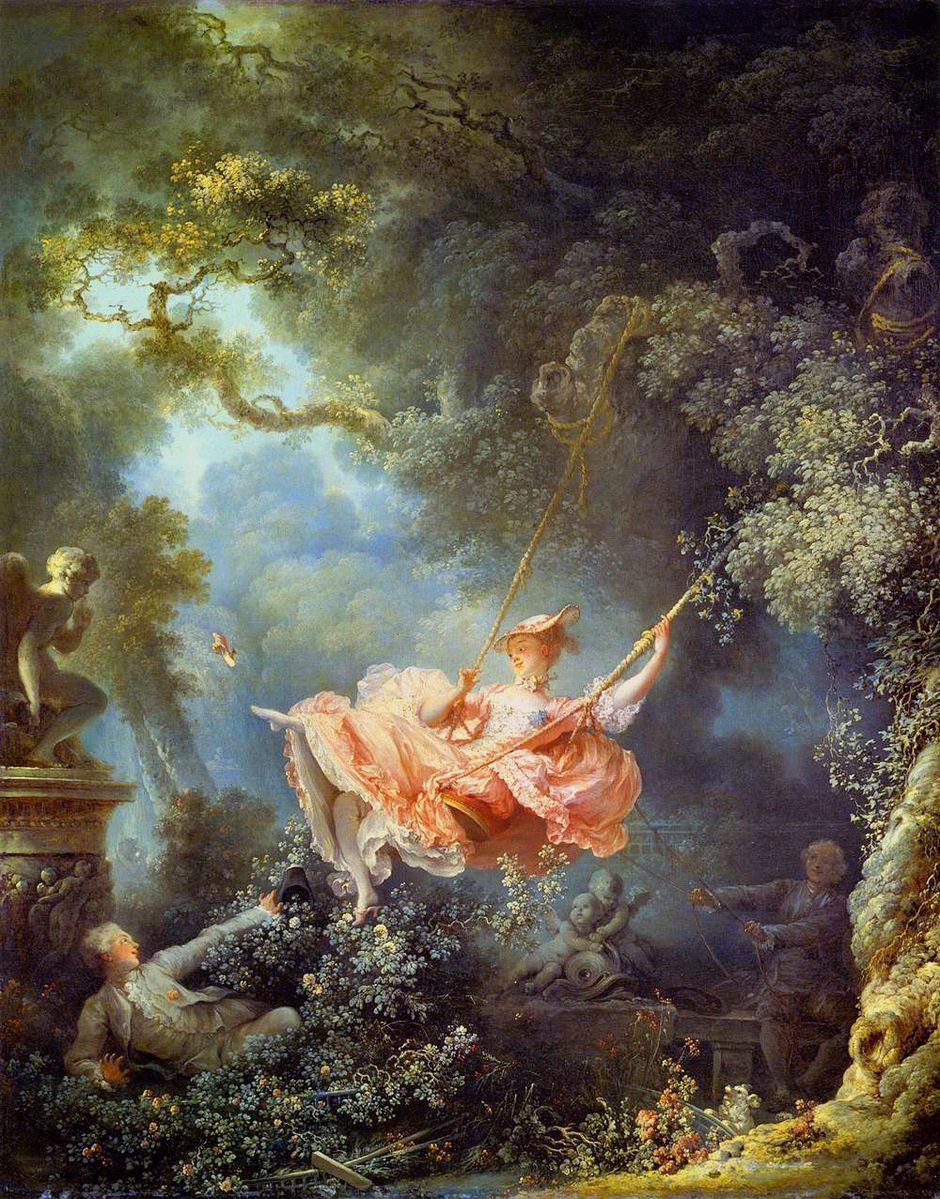
The Stolen Kiss (3.3.16) was painted during the later period of Fragonard's career, and he used a smoother surface with the brush marks carefully blended to give an enamel-like look to the work. Other people appear through the open door, perhaps a party, as the woman moved into the small room to meet someone. The beautiful golden dress of the girl, her bodice displayed with the removal of the scarf, sets the scene for the stolen kiss by the man hidden in the room. Every detail in the room, the patterned rug, the paneled doors, and the small table, are carefully painted into this work.
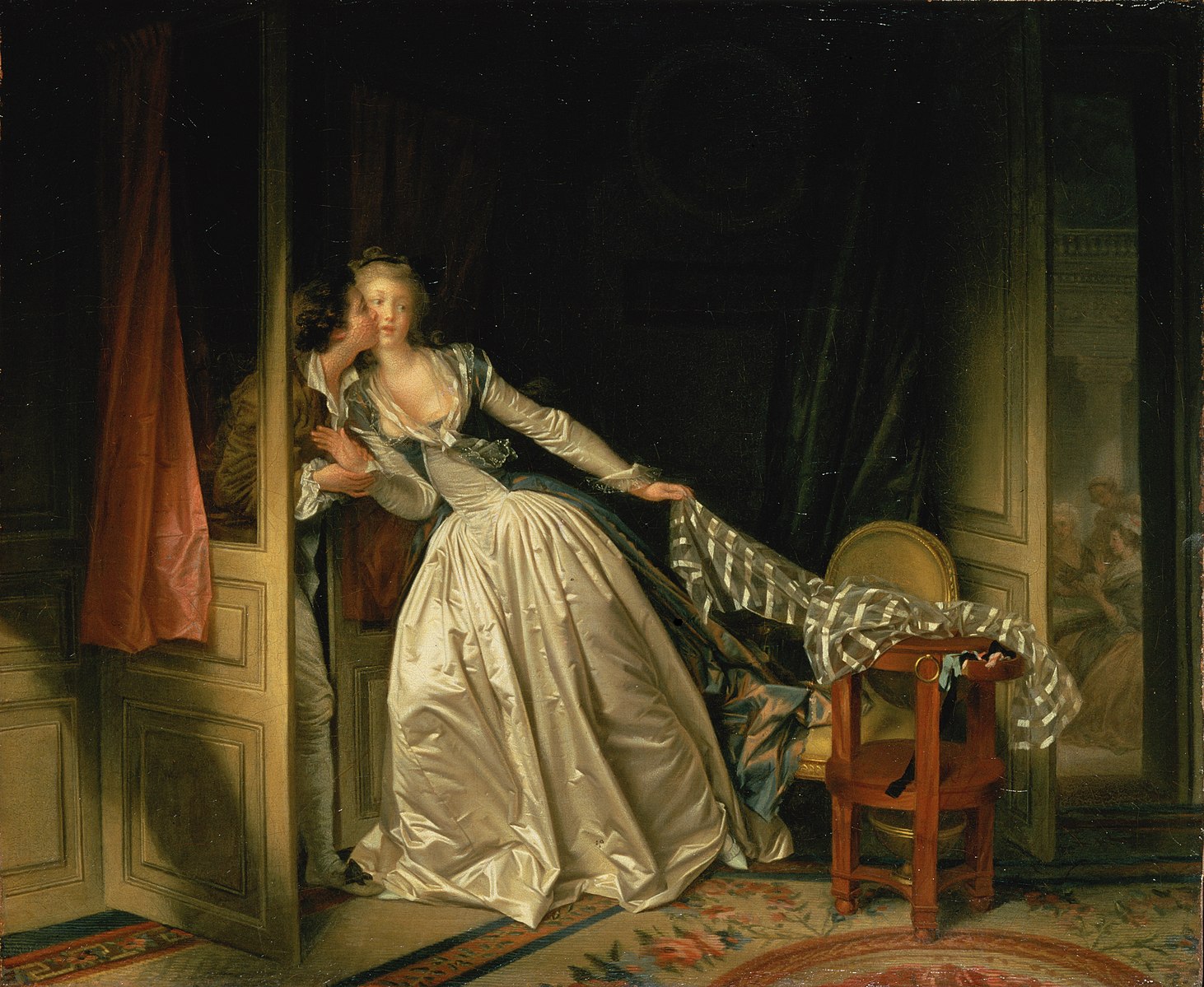
Thomas Gainsborough
Thomas Gainsborough (1727-1788) was born in England and started as an apprentice to a silversmith, later studying under a French artist. By the time he moved to London, he was known for his portrait paintings while maintaining the preferred landscape painting out in the quiet of nature. He became a favorite painter for royalty and society in London, first exhibiting in the newly formed royal academy until he disagreed with how they hung his paintings and set up his exhibition studio. His most famous painting is Blue Boy (3.3.17), the portrait of an unknown person. Painted in contrapposto, the young man stands in blue; every crease is depicted, his feathered hat and the decorative shoes. The background appears as a landscape, and the small dog hides at the bottom by his left foot.

Mr. and Mrs. Andrews (3.3.18) was a portrait of newlyweds who wanted to celebrate their marriage and demonstrate their financial status. A small group of people sitting in an outdoor setting was a typical English theme. Gainsborough positioned the couple to the left of the painting instead of the center and focused on the expansive English countryside with wheat fields and sheep. Although Gainsborough painted in the Rococo style, he was more reserved, and the dress, done in pastel colors, is simpler than the frothy dresses of the French. Oddly, the area around her hands is not painted, and the reason is still unknown. Mr. Andrews stands casually, well dressed, holding his gun, ready to hunt game, not a person who has to toil on the land.

Joshua Reynolds
Joshua Reynolds (1723-1792) was the other prominent portrait painter in England, although, unlike Gainsborough, the king did not favor him. He spent his early years in Europe studying before returning to London. Reynolds was a very prolific painter creating full-length portraits as well as more minor works, especially children. Age of Innocence (3.3.19) is an image of a small girl in a natural setting and is his most well-known work. It was painted over an earlier work of a child with only her hands remaining from the original picture.

Commodore the Honourable Augustus Keppel (3.3.20) was painted in the newly adopted captain's uniform, sporting his hair instead of a wig. Reynolds went on the ship with the commodore to the Mediterranean, where he probably painted the picture. He became friends with Keppel, accompanied him multiple times, and painted several works of Keppel over the years. Reynolds liked to pose his subjects similar to the old masters he studied as a young man, and his style was thought to be a modern method.
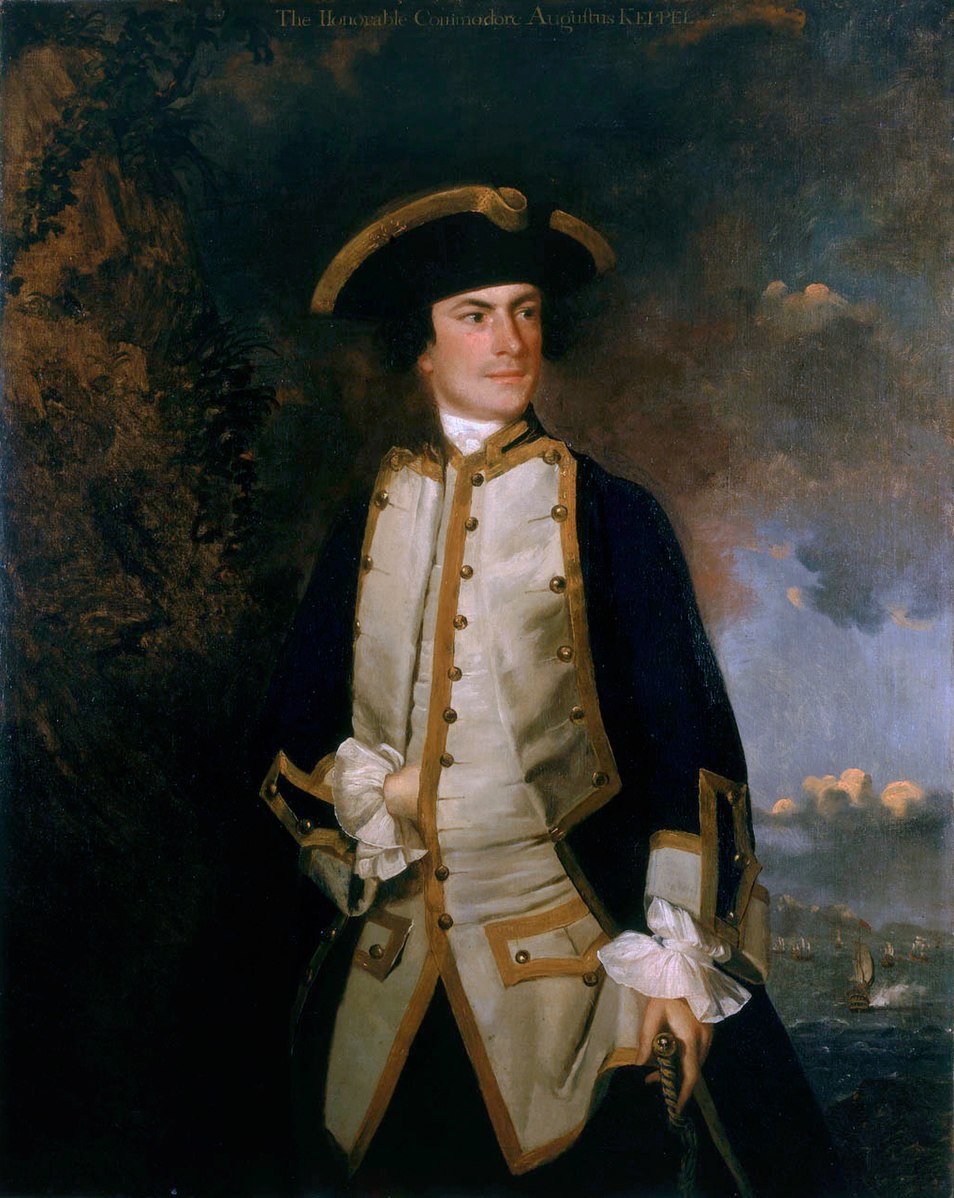
The Age of Enlightenment brought an end to the excessiveness of the Rococo period as the old order was begin challenged with ideas of liberty, tolerance, and constitutional government. The believers of enlightenment condemned the monarchies and the art of the time, wanting more morality and portrayal of the common man and their fundamental rights. The French Revolution in 1789 brought an end to the monarchy in France, and the ideas spread throughout Europe, ending the Rococo style of art.
[1] Jeffares, N., Dictionary of Patellists Before 1800, retrieved from http://www.pastellists.com/Articles/RoslinMS.pdf
[2] Michel, M. R.. "Vallayer-Coster, Anne". Grove Art Online. Oxford Art Online. Oxford University Press. Retrieved from https://en.wikipedia.org/wiki/Anne_Vallayer-Coster
[3] Retrieved from https://ascenlightenmentsalon.omeka.net/exhibits/show/arts/paintings/pastoral


